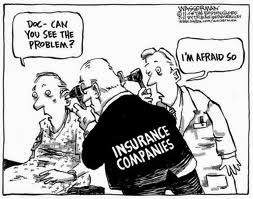Internet access has ushered in an era of price transparency, where shoppers wielding smartphones check prices before deciding where to buy items such as washing machines and flat-screen televisions. Could making price information readily available contribute to a reduction in certain health-care costs, too? Research suggests so.
To date, while some may suspect that price-transparency initiatives would reduce health-care costs, there has been little published evidence to support the supposition. Part of the difficulty is that patients don’t respond to health-care prices as they do to the prices of other consumer goods. Patients with health insurance are mostly insulated from actual care costs, so they have little incentive to choose care based on price. Patients may also believe, sometimes wrongly, that the more expensive the health care, the better the quality.
Associate Professor Hans B. Christensen, Assistant Professor Mark G. Maffett, and PhD student Eric Floyd examine the effects of price transparency on costs associated with hip-replacement surgery. The procedure is relatively standardized, produces similar outcomes, and is often obtained on an elective basis, allowing the patient flexibility and sufficient time to shop for an orthopedic surgeon and site prior to receiving the operation.
The variation in price tags for hip-replacement procedures illustrates the need for greater transparency: despite the seeming homogeneity of the operation, the researchers document total charges ranging from $16,269 to $93,805. Would a consumer, cognizant of this variation, seek out the less-expensive services?
Relying only on data obtained from states with price-transparency regulations, Christensen, Maffett, and Floyd find evidence that implementing price-transparency regulations reduced the prices charged for elective, uncomplicated hip replacements by an average of about 7%.
Read more at Capital Ideas: With price transparency, hospitals charge less

















